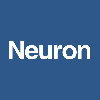Neuroprotection through Excitability and mTOR Required in ALS Motoneurons to Delay Disease and Extend Survival
Smita Saxena
Neuron,
2013
Delaying clinical disease onset would greatly reduce neurodegenerative disease burden, but the mechanisms influencing early preclinical progression are poorly understood. Here, we show that in mouse models of familial motoneuron (MN) disease, SOD1 mutants specifically render vulnerable MNs dependent on endogenous neuroprotection signaling involving excitability and mammalian target of rapamycin (mTOR). The most vulnerable low-excitability FF MNs already exhibited evidence of pathology and endogenous neuroprotection recruitment early postnatally. Enhancing MN excitability promoted MN neuroprotection and reversed misfolded SOD1 (misfSOD1) accumulation and MN pathology, whereas reducing MN excitability augmented misfSOD1 accumulation and accelerated disease. Inhibiting metabotropic cholinergic signaling onto MNs reduced ER stress, but enhanced misfSOD1 accumulation and prevented mTOR activation in alpha-MNs. Modulating excitability and/or alpha-MN mTOR activity had comparable effects on the progression rates of motor dysfunction, denervation, and death. Therefore, excitability and mTOR are key endogenous neuroprotection mechanisms in motoneurons to counteract clinically important disease progression in ALS.
- Journal
- Neuron
- Year
- 2013
- Page
- 80-96
- Institute
- University of Bern
Referenced Services
Vector Biolabs
293 Great Valley Parkway
Malvern, PA 19355
Email: info@vectorbiolabs.com
Phone: +1 484-325-5100
Toll-free (US Only): 877-BIO-LABS
Fax: +1 215-525-1112
Privacy Policy

